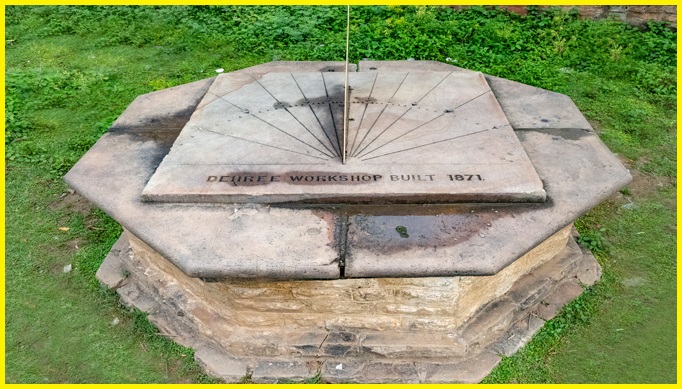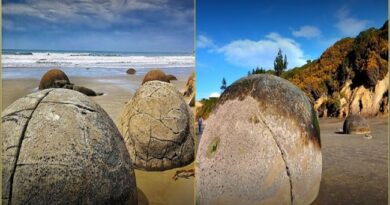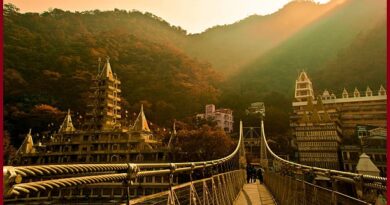Land of over 200 waterfalls and a Historical city-Sasaram Bihar
Sasaram Bihar
Sasaram also known as Sahasram, is an ancient historical city in Bihar state in eastern India. It is situated on the banks of the Sone River and is known for its rich history and heritage. It has a history that goes thousands of years. During the prehistoric age, Buddha lived for some days here during his visit to Gaya.
The City Sasaram Bihar served as the capital of the Sur dynasty during Shershah Suri ruled over India in the 16th Century and was the residence place of epic King Kartivirya Arjuna. The Rohtasgarh fort situated in Sasaram Bihar and one of the world’s oldest forts has served as the capital for several dynasties, including Shershah Suri and Akbar Governor King Man Singh, as well as the Shashanka.
Sasaram city has many famous religious and historical spots to visit such as the Shershah tomb, Rohtasgarh fort, Indrapuri Dam, Karamchat Dam, Shergarh fort, Kandhar fort, Sacred Tarachandi Shaktipith, Bhaluni dham, Mahadev Khoh, Chaurasan temple, Gupta Dham, Tutla Bhawani temple, Pilot Baba Dham, Godaila Pahad Temple, Anicat Dam, Eco park and the many other location.

Sasaram weather
Sasaram Bihar experiences a subtropical climate, characterized by hot summers and mild winters. The city is located in the plains, and the weather is influenced by the nearby Ganges and Sone rivers.
Summer (March to June): The summer season in Sasaram Bihar is hot and humid, with temperatures ranging from 30°C to 45°C. The city experiences heat waves during this season, with temperatures sometimes reaching 48°C. It is not the best time to visit Sasaram Bihar, as the heat can be uncomfortable for many.
Monsoon (July to September): The monsoon season in Sasaram brings relief from the heat, as temperatures drop to around 30°C. The city receives moderate to heavy rainfall during this season, and the surrounding areas become lush and green.
Post-Monsoon (October to November): This is a good time to visit Sasaram Bihar, as the weather is pleasant, and the city is surrounded by greenery. Temperatures range from 25°C to 30°C, and the humidity levels are low.
Winter (December to February): The winter season in Sasaram Bihar is mild, with temperatures ranging from 5°C to 20°C. The city experiences occasional fog during this season, which can disrupt travel plans.
Sasaram Tourist Place
Sher Shah Suri Tomb
Sher Shah Suri Tomb is the tomb of Sher Shah Suri, a ruler of the Suri dynasty who was instrumental in the development of the Grand Trunk Road, a major trade route that spanned the Indian subcontinent. The tomb is a fine example of Indo-Islamic architecture and was built between 1540 and 1545 by Sher Shah Suri’s son and successor, Islam Shah Suri. The tomb is situated on an elevated platform and is constructed of red sandstone and marble. It features a dome that is said to have inspired the design of the Taj Mahal.
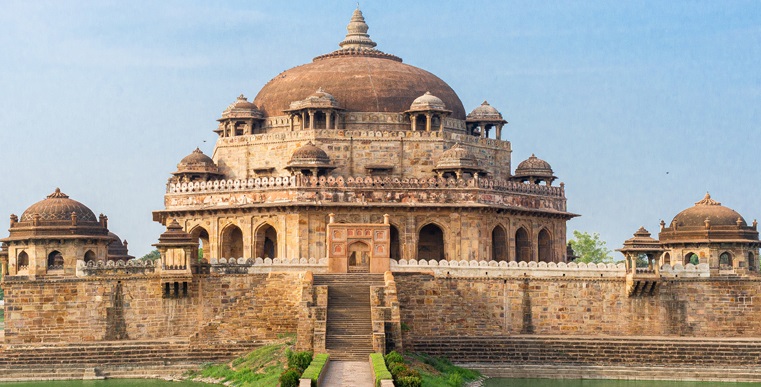
The tomb is surrounded by a beautiful garden, which was laid out in the Mughal style during the reign of Emperor Jahangir. The garden features a large water tank, which is said to have been built by Sher Shah Suri himself. Today, the Sher Shah Suri Tomb is a popular tourist attraction and is recognized as a national heritage site by the Archaeological Survey of India.
Rohtasgarh Fort
Rohtasgarh Fort is a historical fortification in the town of Sasaram Bihar. It was built by the Afghan king Sher Shah Suri in the 16th century, and is considered to be one of the most impressive examples of military architecture in India.
The fort is situated on a rocky hill overlooking the Sone River and covers an area of approximately 10.35 square km. It features a number of impressive structures, including palaces, temples, and barracks, as well as a massive gatehouse known as the Hathiya Pol.
Also read- The Picturesque ‘Telhar Waterfall’ in Kaimur India-Geotourism
One of the most notable features of the Rohtasgarh Fort is its 3-kilometer-long wall, which is up to 10 meters thick in some places and is punctuated by several bastions and gateways. The wall was built to protect the fort from enemy attacks and is said to have taken over a decade to complete.
Today, the Rohtasgarh Fort is a popular tourist attraction and is recognized as a national heritage site by the Archaeological Survey of India. It is also known for its association with the legendary king Vikramaditya, who is said to have ruled the region from the fort.
Kaimur Wildlife Sanctuary
Kaimur Wildlife Sanctuary is a protected area located in the Kaimur district. The sanctuary covers an area of approximately 1,340 square kilometers and is home to a diverse range of flora and fauna.
The sanctuary is situated on the Kaimur plateau, which is characterized by rugged terrain and rocky hills. The vegetation in the sanctuary is predominantly dry deciduous forest, with teak, sal, and bamboo being the dominant species. The wildlife in Kaimur Wildlife Sanctuary includes several species of mammals, such as chital, sambar, nilgai, wild boar, Indian hare, and langur. The sanctuary is also home to a variety of bird species, including vultures, eagles, peafowl, and jungle fowl.
Visitors to Kaimur Wildlife Sanctuary can go on jungle safaris and birdwatching tours to explore the sanctuary and observe its wildlife. The sanctuary is open to visitors throughout the year, although the best time to visit is between November and June when the weather is mild and the wildlife is more active.
Tomb of Hasan Khan Suri
The Tomb of Hasan Khan Suri is a historical monument located in the town of Sasaram Bihar. Hasan Khan Suri was a nobleman and a minister in the court of the Afghan king Sher Shah Suri in the 16th century. The tomb is situated on a platform and is constructed of red sandstone and marble. It features a dome with intricate carvings and is decorated with ornamental motifs and Quranic inscriptions.
The tomb is surrounded by a garden, which is laid out in the Mughal style and features fountains and water channels. The garden is said to have been designed by Emperor Jahangir, who was impressed by its beauty and ordered its restoration. The Tomb of Hasan Khan Suri is considered to be an excellent example of Indo-Islamic architecture and is recognized as a national heritage site by the Archaeological Survey of India. It is a popular tourist attraction and is visited by people from all over the world.

Dehri-on-Sone
Dehri-on-Sone is a town located near Sasaram Bihar. It is situated on the banks of the Sone River and is an important commercial and transportation hub for the region. Dehri-on-Sone is home to several notable landmarks, including the Rohtasgarh Fort, which is a historical fortification built by the Afghan king Sher Shah Suri in the 16th century. The town is also known for its association with the legendary king Vikramaditya, who is said to have ruled the region from the nearby Rohtasgarh Fort.
In addition, Dehri-on-Sone is a popular destination for adventure sports enthusiasts, as it offers opportunities for rock climbing, trekking, and river rafting in the nearby hills and rivers.
Sasaram Railway Station
Sasaram Railway Station is a major railway station situated on the Delhi-Howrah main line and is an important transportation hub for the region. The railway station serves several long-distance and local trains, connecting Sasaram to other parts of Bihar, as well as neighboring states such as Uttar Pradesh, Jharkhand, and West Bengal.
Some of the important trains that stop at Sasaram Railway Station include the Poorva Express, the Kalka Mail, the Vikramshila Express, and the Sealdah Rajdhani Express. The station has several amenities for passengers, including waiting rooms, food stalls, and bookstalls. It also has a computerized reservation system and a ticket counter for the convenience of travelers.
Sasaram Railway Station is an important link for trade and commerce, as it facilitates the transportation of goods and commodities from the region to other parts of the country. The station is also a major tourist gateway, as it provides easy access to several popular tourist destinations in the region, including the Rohtasgarh Fort, the Sher Shah Suri Tomb, and the Kaimur Wildlife Sanctuary.
Sundial
Sasaram Bihar has a number of sundials. One of the most famous sundials in Sasaram Bihar is located in the tomb of Sher Shah Suri, a 16th century emperor who ruled over a large part of North India. This sundial is believed to be over 500 years old and is made of marble. It is a precision instrument that can measure time accurately to within 24 seconds. Another famous sundial in Sasaram Bihar is located in the Mausoleum of Hasan Khan Sur, a nobleman who served under Sher Shah Suri. This sundial is also made of marble and is believed to be over 500 years old. Sasaram’s sundials are important cultural and historical landmarks that reflect the rich legacy of the region.
Manjhar Kund
Manjhar Kund is a scenic natural water body located near Sasaram. It is a popular tourist attraction and is known for its crystal-clear waters and picturesque surroundings. The Kund is located in the middle of a forest and is fed by a natural spring. The water is cool and refreshing, making it a perfect spot for swimming and other water-based activities.
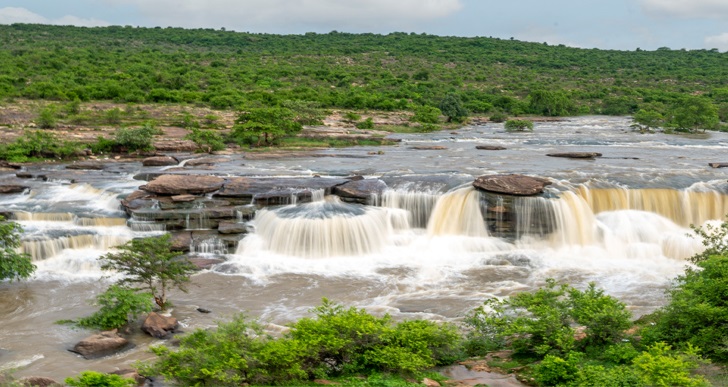
The area around Manjhar Kund is also ideal for picnics and outdoor activities, with several spots for camping and trekking. The Kund is surrounded by lush greenery and offers a peaceful escape from the hustle and bustle of city life. Manjhar Kund is also a popular destination for religious and spiritual tourists, as there is a temple dedicated to Lord Shiva located nearby. The temple attracts a large number of devotees, particularly during the festival of Shivratri.
Sasaram waterfall
Sasaram Bihar and the Kaimur mountain range is a nature’s blessed landscape and prime tourist destination for nature lovers, enriched by numerous spectacular waterfalls, lakes, rivers and picturesque locations. In Ain-I-Akbari it is mentioned that over 200 waterfalls emerge during the rainy season with gorgeous appearances. Some of them are Dharohar – Karamchat Waterfall, Geetaghat Heaven Holy Waterfall, Panari Ghat Waterfalls, Tutla Bhavani Waterfalls are among the most famous. Telhar Kund, Karkat Garh, Mundeshwari Waterfall are also well known in the nearby city in Kaimur Mountain range.
Patna to Sasaram Distance
The distance between Patna, the capital city of Bihar, and Sasaram Bihar is approximately 151 kilometers by road. The travel time can vary depending on traffic conditions and mode of transportation. By car or taxi, it takes around 3-4 hours to reach Sasaram Bihar from Patna. There are also several buses and trains available that connect the two cities, with travel time ranging from 2.5 hours to 4 hours depending on the mode of transport and route taken.
Gaya to Sasaram Distance
The distance between Gaya and Sasaram Bihar is approximately 123 kilometers by road. The travel time can vary depending on traffic conditions and mode of transportation. By car or taxi, it takes around 2-3 hours to reach Sasaram from Gaya. There are also several buses and trains available that connect the two cities, with travel time ranging from 2 hours to 4 hours depending on the mode of transport and route taken.
